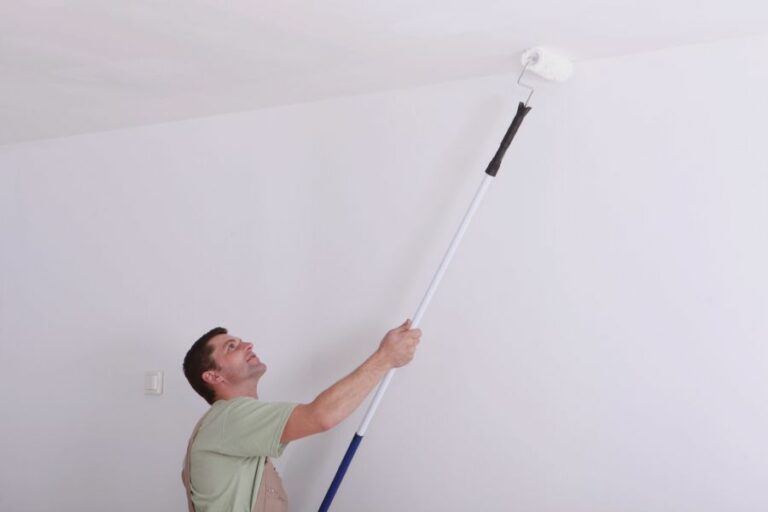Damage Control With Masking Methods. What Pros Say
Minimizing the damages caused by unforeseen incidents is crucial for any organization or individual. To achieve this, one needs to be well-equipped with efficient masking methods, and that’s where we come in to help you. With our expertise in damage control strategies, we are confident that we can guide you through the most effective masking techniques, ensuring the utmost protection and business continuity.
Damage control with masking methods:
Masking methods in damage control promote precision and protection during restoration processes. They include tape masking, liquid masking, stencils and shields, plastic sheeting, and paper masking. These techniques help apply repair materials accurately, prevent additional damage, and protect surrounding areas, ensuring efficient and high-quality restoration.

Discover the art of damage control with ingenious masking methods! Gain insights and learn practical techniques to address various issues, minimize negative impact, and maintain your image. Read on to unveil our treasure trove of valuable tips and tricks to master the art of discretion and problem-solving.
Effective Masking Techniques for Damage Control
Damage control is essential to preserving and restoring the integrity of various surfaces and structures subjected to wear and tear, corrosion, or external factors.
As part of the restoration process, masking methods play a vital role in protecting surrounding areas from further damage and ensuring the precise application of the repair materials.
• The Importance of Masking Methods in Damage Control
Masking methods are crucial for two primary reasons: precision and protection. By using different masking techniques, you can accurately apply repair materials such as paints, primers, or resins to the affected areas without spilling over to adjacent spaces.
This level of precision ensures that restoration occurs only where necessary, thereby preventing additional harm to adjacent surfaces or structures.
Furthermore, as already mentioned, masking provides protection to the surroundings. When working with chemicals or abrasive materials, it is essential to prevent further damage to adjacent areas and promote a safer, more efficient restoration process.
• Common Masking Techniques and Materials
There is a wide variety of masking techniques and materials, each catering to different applications and requirements. Here are some common masking methods and materials you might come across in damage control projects:
– Tape Masking
Tape masking is one of the most popular masking methods, primarily due to its ease of use and adaptability. Different types of masking tape are available, such as painter’s tape, electrical tape, and duct tape, each offering specific characteristics that cater to different applications or surfaces.
– Liquid Masking
Liquid masking consists of applying a liquid, which dries into a removable film, over surfaces that require protection during the restoration process. This material is typically used in conjunction with other masking techniques, as it can reach areas not easily accessible with tape or other materials.
– Stencils and Shields
Stencils and shields, typically made from plastic, metal, or cardboard, are used to create precise outlines and boundaries for paint, primer, or resin applications. These materials are particularly useful for large-scale damage control projects, as they can be easily moved and repositioned as needed.
– Plastic Sheeting
Plastic sheeting offers extensive coverage, making it an ideal material for protecting large areas or surfaces during damage control work. Additionally, plastic sheeting is lightweight and comes in various thicknesses, catering to different protective needs.
– Paper Masking
Paper masking is a cost-effective and eco-friendly solution for masking, often used in painting applications. When paired with masking tape, the paper offers an easy-to-use, disposable option for surface protection.
• Expert Recommendations
Over the years, I have seen many masking methods implemented and would like to share some tips for achieving the best results in your damage control projects:
- Always choose the right masking material for your specific application and surface type. Using the wrong material can result in ineffective masking and damage to the surface.
- Test your masking materials on a small, inconspicuous area to ensure they do not cause any discoloration or adhesive residue.
- Take the time to properly clean and prepare the surfaces before applying masking materials. This will allow for better adhesion and protection throughout the restoration process.
- Replace masking materials regularly, especially when working with chemicals or abrasive materials, to prevent contamination and ensure maximum protection.
- When removing masking materials, proceed slowly and carefully to avoid any damage to the freshly restored areas.
• Conclusion
Damage control is a vital process that preserves the integrity of surfaces and structures and ensures their longevity. Employing appropriate masking methods greatly contributes to a successful restoration while offering precision and protection.
By understanding and using various masking techniques effectively, you can ensure that your damage control efforts are efficient, safe, and produce the highest quality results.







